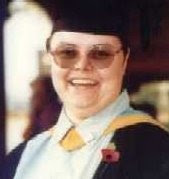
Welcome to the second Scholar's Blog Book Discussion Group.
I confess that I instantly fell in love with Penelope Lively's
The House in Norham Gardens when I read first read it last August, from the moment that I read the first three verses of Thomas Hardy's poem, "Old Furniture" (below) quoted on the dedication page.
The edition I have (Jane Nissen, 2005) has an interesting introduction by Philip Pullman, which I wish I could quote in full for those who don't have it. He talks about there being an invisible character who haunts much of Penelope Lively's work - that character or presence is Time. He describes Lively as "the laureate of time" and notes that "there's more awareness of the presence of the past in her work, both for children and for adults, than in that of almost any other novelist." Pullman also discusses the extraordinary atmosphere of the novel, and it was that atmosphere as much as anything else that attracted me to this tale.
Old Furniture I know not how it may be with others
Who sit amid relics of householdry
That date from the days of their mothers' mothers,
But well I know how it is with me
Continually.
I see the hands of the generations
That owned each shiny familiar thing
In play on its knobs and indentations,
And with its ancient fashioning
Still dallying:
Hands behind hands, growing paler and paler,
As in a mirror a candle-flame
Shows images of itself, each frailer
As it recedes, though the eye may frame
Its shape the same. (The full poem is
here.)
From the first page of the story, I was gripped - here are some of the things I loved about it:
1 -
The houses there are quite normal. They are ordinary sizes and have ordinary chimneys and roofs and gardens with laburnum and flowering cherry. Park Town. As you go south they are growing. Getting higher and odder. By the time you get to Norham Gardens they have tottered over the edge into madness: these are not houses but flights of fancy. (p. 1)
2 - The lines
The front door was not locked. Old ladies lose front door keys. (p. 2) - so practical and so typical of Clare's attitude to her elderly aunts.
3 - Clare's imaginary conversation with a person from outer space (also p. 2), which serves to explain to readers who aren't familiar with the style of British homes of earlier centuries, with their quaintly named rooms.
4 - Clare's meditation on whether or not houses should be razed once they are no longer useful, and the reference to the passing of the people who've lived in them. (p. 5)
5 - The exchange between Clare and her aunts in which they award each other grades such as "B double plus" and "Gamma plus" (p. 9). This exchange is full of their shared affection for each other, but it also demonstrates that the two old ladies are not witless.
6 - I like Lively's use of the diary entries (in chapter 6) and the way in which each chapter opens with an account of the lives of the tribe to whom the tamburan belonged.
7 - I thought it interesting that Lively used dreams to show the way in which the tamburan, and its link to the past, affects Clare.
For those of you without the Jane Nissen edition of Lively's book, the tamburan is illustrated on the cover photo (see above), behind the book title (below):

So what did you think of this book? What did you like? What did you feel didn't work? And would it encourage you to read more of Lively's children's fiction?



